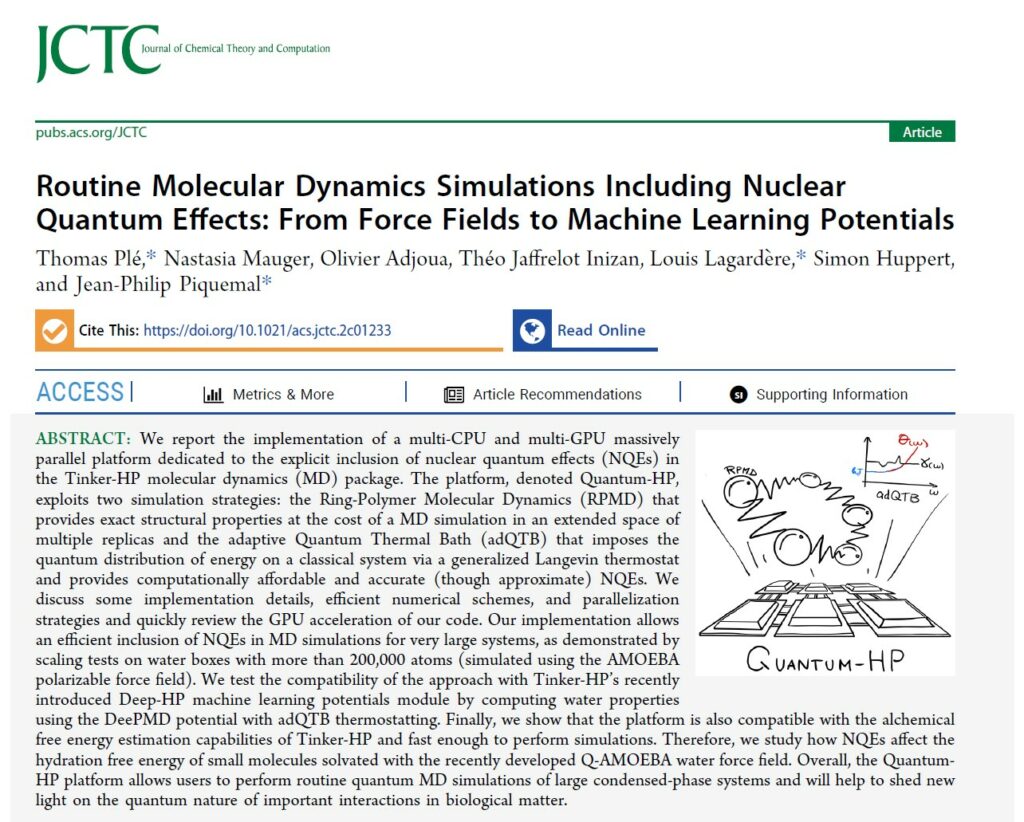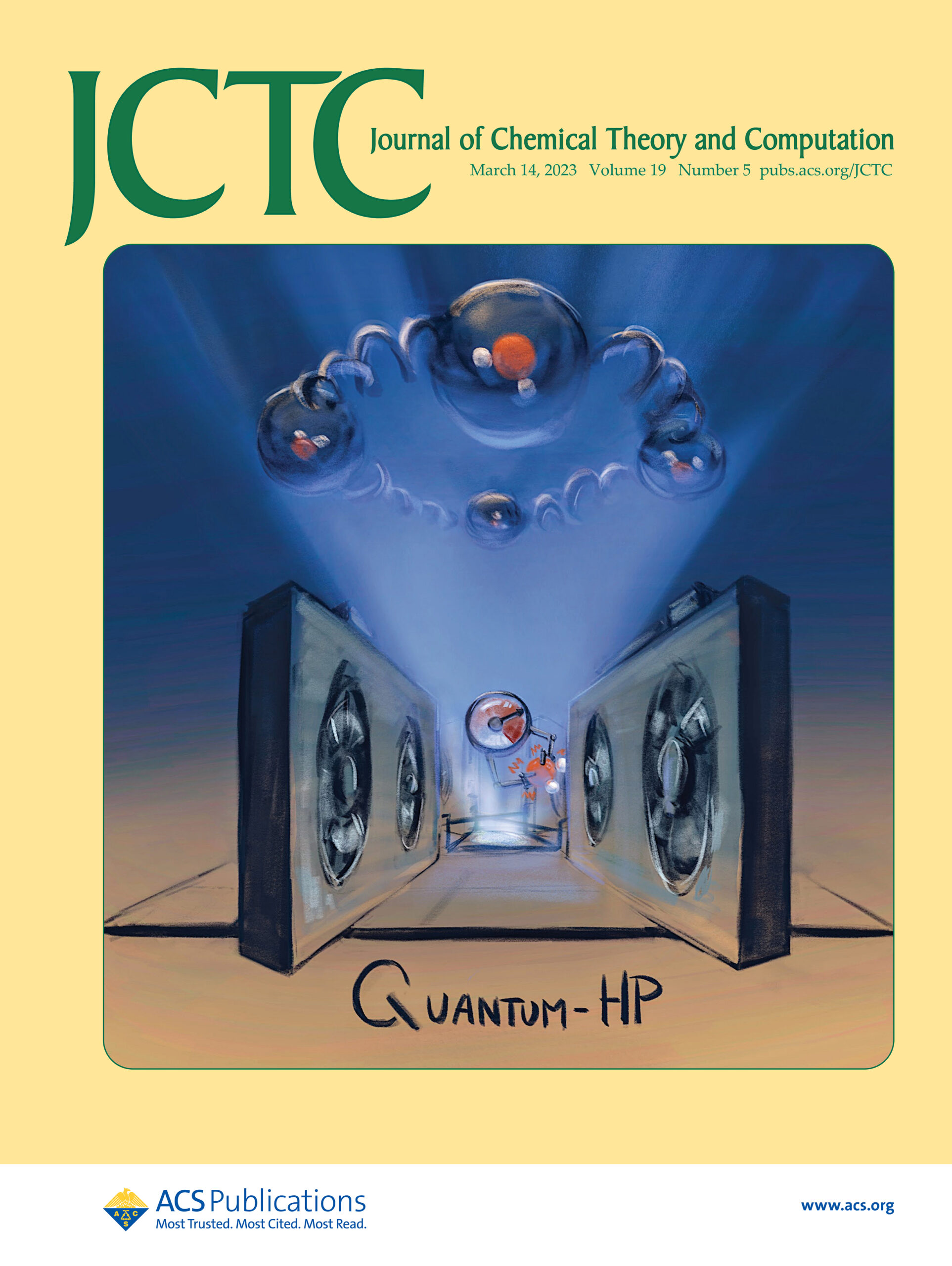New paper published in the Journal of Chemical Theory and Computation: Routine Molecular Dynamics Simulations Including Nuclear Quantum Effects: from Force Fields to Machine Learning Potentials. T. Plé, N. Mauger, O. Adjoua,T. Jaffrelot-Inizan, L. Lagardère, S. Huppert, J.-P. Piquemal, J. Chem. Theory. Comput., 2023, 19, 5, 1432–1445 (COVER)
http://dx.doi.org/10.1021/acs.jctc.2c01233
We report the implementation of a multi-CPU and multi-GPU massively parallel platform dedicated to the explicit inclusion of nuclear quantum effects (NQEs) in the Tinker-HP molecular dynamics (MD) package. The platform, denoted Quantum-HP, exploits two simulation strategies: the Ring-Polymer Molecular Dynamics (RPMD) that provides exact structural properties at the cost of a MD simulation in an extended space of multiple replicas and the adaptive Quantum Thermal Bath (adQTB) that imposes the quantum distribution of energy on a classical system via a generalized Langevin thermostat and provides computationally affordable and accurate (though approximate) NQEs. We discuss some implementation details, efficient numerical schemes, and parallelization strategies and quickly review the GPU acceleration of our code. Our implementation allows an efficient inclusion of NQEs in MD simulations for very large systems, as demonstrated by scaling tests on water boxes with more than 200,000 atoms (simulated using the AMOEBA polarizable force field). We test the compatibility of the approach with Tinker-HP’s recently introduced Deep-HP machine learning potentials module by computing water properties using the DeePMD potential with adQTB thermostatting. Finally, we show that the platform is also compatible with the alchemical free energy estimation capabilities of Tinker-HP and fast enough to perform simulations. Therefore, we study how NQEs affect the hydration free energy of small molecules solvated with the recently developed Q-AMOEBA water force field. Overall, the Quantum-HP platform allows users to perform routine quantum MD simulations of large condensed-phase systems and will help to shed new light on the quantum nature of important interactions in biological matter.

